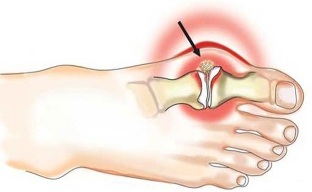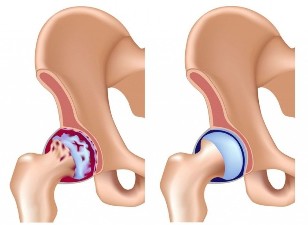
Arthritis and osteoarthritis are complex diseases that affect the joints. Because of similar symptoms, many people think that these diseases are the same, but they are not. Arthritis and osteoarthritis differ in the causes of the disease, the nature of its development, the area of the lesion and require a completely different treatment.
Suppose two people go to a doctor who complains of joint pain. One was diagnosed with arthritis and the other with osteoarthritis. As both patients sat in line, they found time to discuss their health problems.
Their symptoms turned out to be very similar: joints ache, do not bend / bend at full strength, do not rest at night or during the day. The diagnoses are also silent, but still different. What is the difference between arthritis and osteoarthritis if both diseases affect the joints?
What is arthritis
Arthritis is an inflammatory disease of the joints. Bone or cartilage tissue is always damaged by certain factors.
Biologically active substances are released from destroyed cells, which causes an inflammatory reaction. The blood vessels in the lesion dilate and fill with blood: for this reason, immune cells are formed in the joint tissue to fight the harmful factor.
At the same time, the fluid part of the blood comes out of the vascular bed and edema develops, which limits the area of inflammation. Thus, the body protects itself from extensive damage from bacteria, foreign bodies and chemicals.
After complete or partial removal of the pathogen, the healing mechanism begins. If the damage is minimal, normal tissue function is restored. Deep defects heal with scarring - an area of rough connective tissue that does not perform the normal function of an organ.
Arthritis goes through all these stages:
- change - damage;
- exudation - the formation of edema;
- reproduction - improvement.
Reasons
The causes of the disease are great, we will list the basics:
- Streptococcal infection (tonsillitis, scarlet fever) often causes a complication - rheumatism;
- aggressive autoantibodies - proteins produced by the body to fight its own tissues; Such a situation develops with a mistake in the defense of the immune system, so the joints are perceived as an external element for the body - rheumatoid arthritis;
- Disorders of purine metabolism lead to the deposition of uric acid crystals in the joints - gout;
- Allergic reactions are an inflammatory reaction - may involve the joint tissue with the development of allergic arthritis;
- Long-term use of certain drugs causes inflammation (isoniazid, D-penicillins, hydralazine, perforations) - drug arthritis;
- bacteria are carried in the bloodstream or during surgery - infectious arthritis;
- Viral or bacterial infection of any localization can indirectly affect joint tissues - it is reactive arthritis;
- acute trauma - recent injuries (blow, bruise, capsule rupture).

Symptoms
The disease is characterized by an acute onset, ie a person has a sharp pain in the joint in the background of complete health. Symptomatic damage to small joints is characteristic of autoimmune forms - interphalangeal in the fingers, wrist, elbow.
In the vast majority of cases, gout begins with inflammation of the joint between the big toe and the foot. In bacterial and reactive arthritis, large joints are usually affected on one side: the knee, hip, sacrum (in combination with the lumbar pelvis).
Rheumatism usually develops against the background of fever and general weakness, which begins with angina. Severe inflammation of the bone, cartilage and synovium can occur with fever, general intoxication: headache, weakness, loss of appetite.
The skin on the joint turns red and feels warmer than other areas. Externally it appears swollen and increases in volume. If the lesion occurs on one side only, the difference between a healthy limb and a patient can be seen.
It is associated with limited movement, swelling and pain. If the joint space is slightly inflamed, it works almost completely. With an obvious pathological reaction, the entire synovial cavity can be filled with fluid - in this case, mobility is severely limited.
Treatment
Treatment is performed by a general practitioner, rheumatologist or traumatologist - if the cause is mechanical damage. Therapy is aimed at eliminating the stimulus and stopping the inflammation.
Bacterial and reactive arthritis require antibiotics, autoimmune cytostatics or glucocorticoids, allergens glucocorticoids and antihistamines.
During arthroscopy, the inflammatory fluid is removed with a syringe or special suction. The joint is immobile for the entire period of acute inflammation. After the patient is shown therapeutic actions to restore joint mobility.
doctor's advice
From personal practice and work experience of colleagues - inflammation of the joints of any etiology, compression with gelatin has shown itself well. Their application is simple and inexpensive. Gauze should be folded in several layers, the length and width should be sufficient for the painful joint. Immerse the folded gauze in warm water, squeeze and straighten. Pour a thin layer of gelatin on it, fold it inside, as in the bag, so that it does not spill. Put on the joint, wrap in a plastic bag on top, cover with bandage and / or adhesive tape. You can apply a compress for up to 3 hours, 2 times a day for 2 weeks. Generally, the effect is felt on the 4th or 5th day of use, but therapy should be continued to achieve the desired result, and if the course is stopped, the pain will return.
What is osteoarthritis
Osteoarthritis (otherwise osteoarthritis) is a degenerative-dystrophic disease. This is due to the deterioration of articular cartilage nutrition, slow recovery and gradual thinning.
In short, the cartilage layer wears out faster than it is rebuilt. Bone is exposed to articular surfaces. They are not as smooth as cartilage and rub hard against each other while moving. Bone plaques are partially destroyed, mild chronic inflammation develops.
As the disease progresses, bone spurs grow in the joint - a protective tissue reaction against permanent damage. They interfere with the sliding of the surfaces relative to each other and impair the mobility of the joint.
In most people, osteoarthritis begins to progress after 30-40 years, lasts for years, and the symptoms are mild to moderate.
Osteoarthritis of the vertebral joints is generally called osteochondrosis.
Reasons
There are predisposing factors that lead to the development of pathology at an early age and complicate its course:
- heavy physical activity in athletes;
- obesity;
- joint injury history;
- vascular disease;
- sedentary lifestyle;
- violation of the normal configuration of the joint, for example, with straight legs;
- prolonged exposure to vibration;
- in women - hormonal imbalance or menopause.

Symptoms
Large joints on one side are generally affected: knee, hip, sacral. The disease begins without being felt. Initially, pain is rare and is associated with significant physical exertion.
Unpleasant feelings disappear if you can rest for a day or a few days. As the disease progresses, the intensity of the pain increases, as does normal daily stress.
The mobility of the joint gradually decreases and completely disappears as a result of the disease. Exercises in the patient's limbs cause severe pain. Osteoarthritis can be aggravated by the type of osteoarthritis - fluid accumulates in the joint space, the skin on it turns red and becomes hot. After the inflammatory reaction subsides, the course of the disease returns to its previous course.
Treatment
Osteoarthritis is treated by a traumatologist, orthopedist, and sometimes a surgeon. Therapy is aimed at restoring metabolic processes in cartilage, improving joint nutrition and eliminating the inflammatory reaction. Treatment can be lifelong or medication courses.
Chondroprotectors are prescribed in the form of tablets and ointments, therapeutic exercises, massage during the interictal period. In case of exacerbation, chondroprotectors are administered intravenously or intramuscularly in combination with analgesics and anti-inflammatory drugs. The traumatologist can inject contraceptives directly into the joint every few months.
Advanced stages of the disease require surgical intervention, during which the patient is replaced by an artificial joint.
Differences between diseases
| Feature | Arthritis | Arthrosis |
| Cause of illness | Inflammation | Cartilage degeneration |
| Stream | Acute, chronic with exacerbation | Chronic |
| Pain | Intensive from the beginning, clearer in the morning | At the beginning of the disease is weak, gradually increasing. Strengthens in the evening and after strength |
| Actions | need to "disperse" - joints are least active after sleeping in the morning | Mobility gradually decreases, there is no morning stiffness |
| Affected joints | The small joints of the hands and feet are affected symmetrically. Adults suffer from bacterial infections | One or more large joints on different sides of the body |
| Blood test | Severe inflammatory changes in the general blood test, rheumatoid factor, C-reactive protein, antibodies to pathogens | No characteristic change |
| x-ray | Gradual changes, osteoporosis - bone loss, cysts in the bones | Gradual changes, deformation of the joint space, the appearance and growth of bone marrow. |
| Basic Treatment | Anti-inflammatory drugs | Chondroprotectors |
A similar feature of both diseases is a progressive course with gradual loss of mobility. Autoimmune arthritis often manifests itself when a young person is still unserious about their health.
It is important to remember that any long-term joint pain occurs under certain conditions - this is a good reason to see a doctor. In order to slow down the development of the pathological process, it is important to identify the disease in time and start treatment.



































